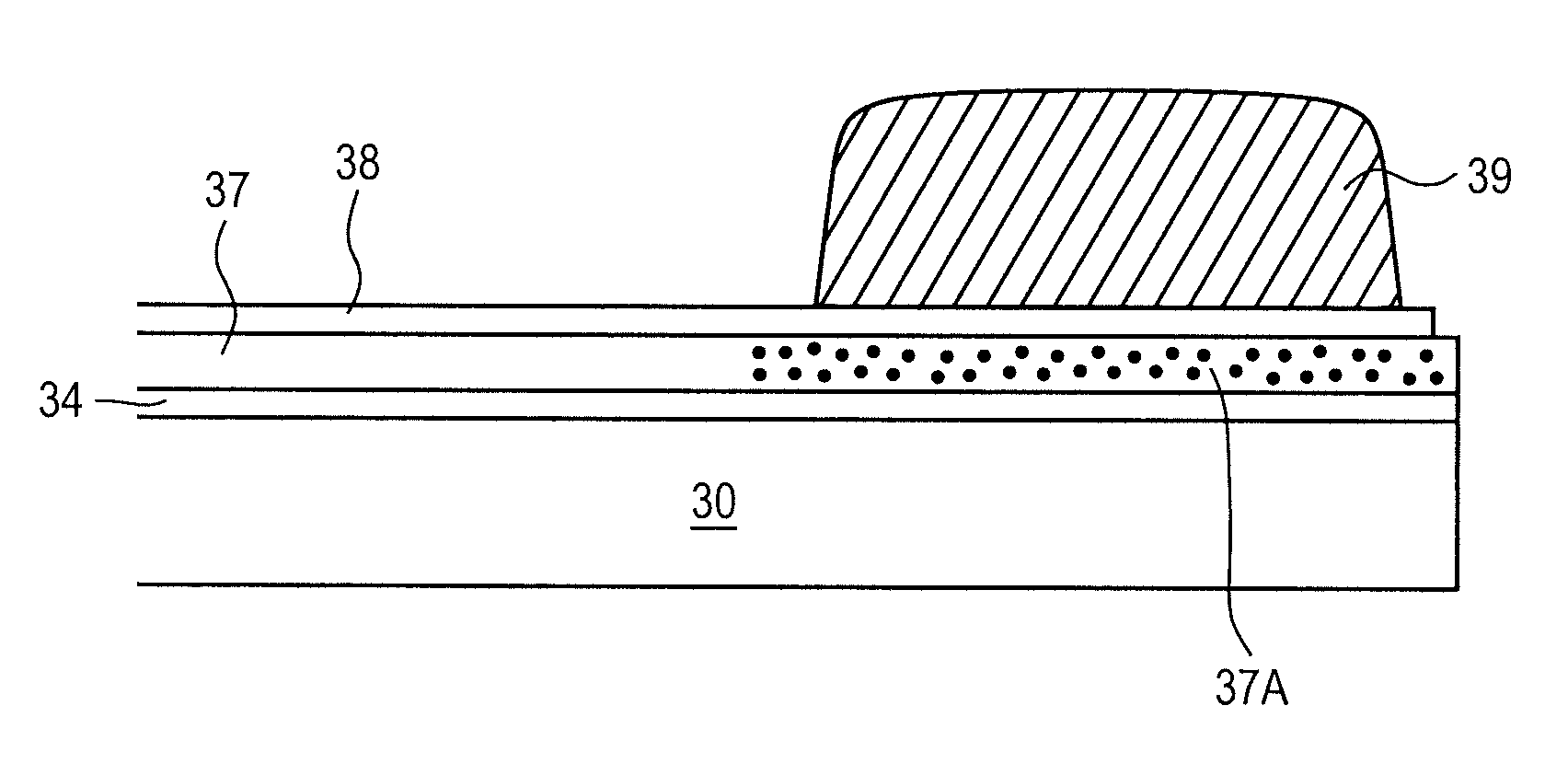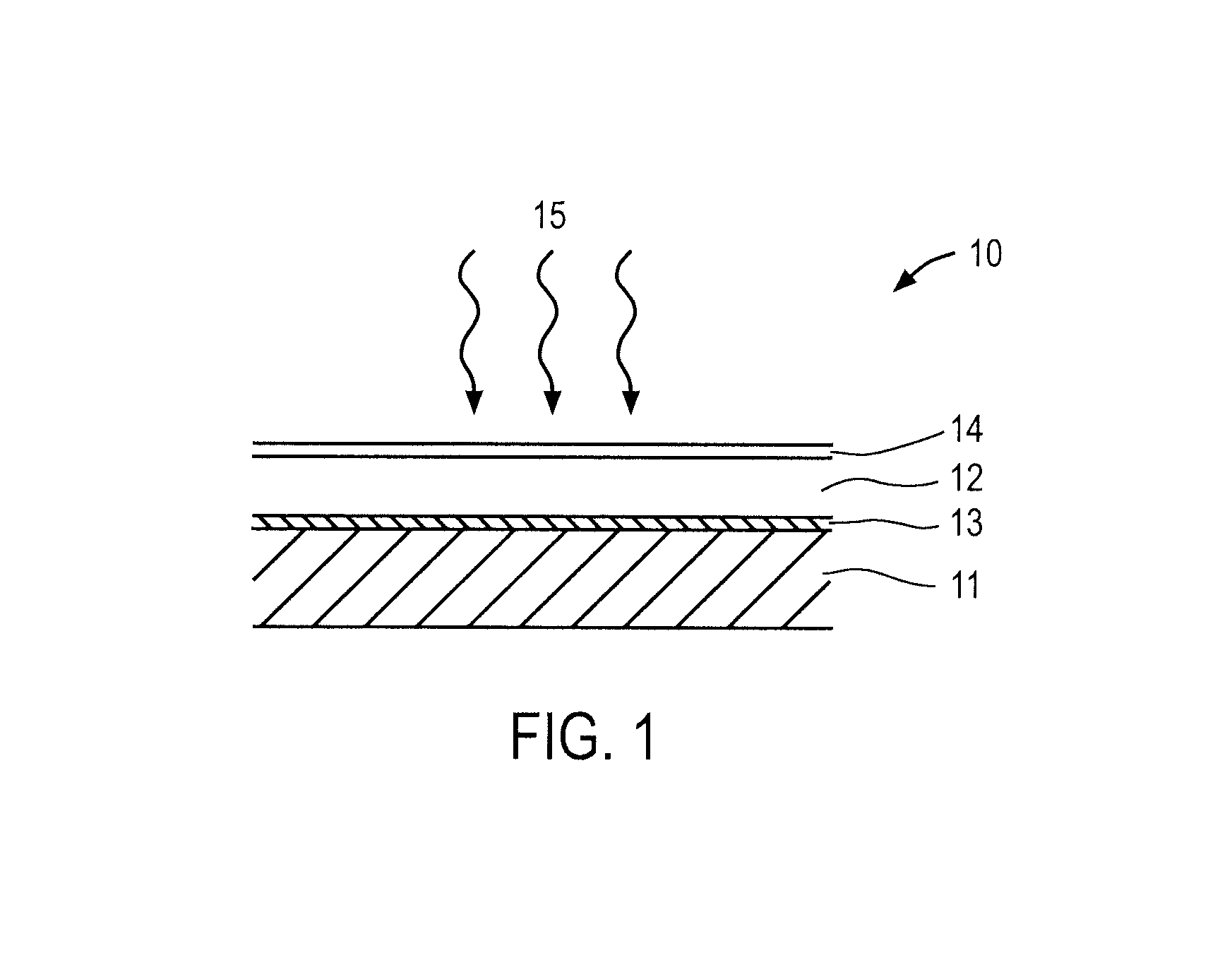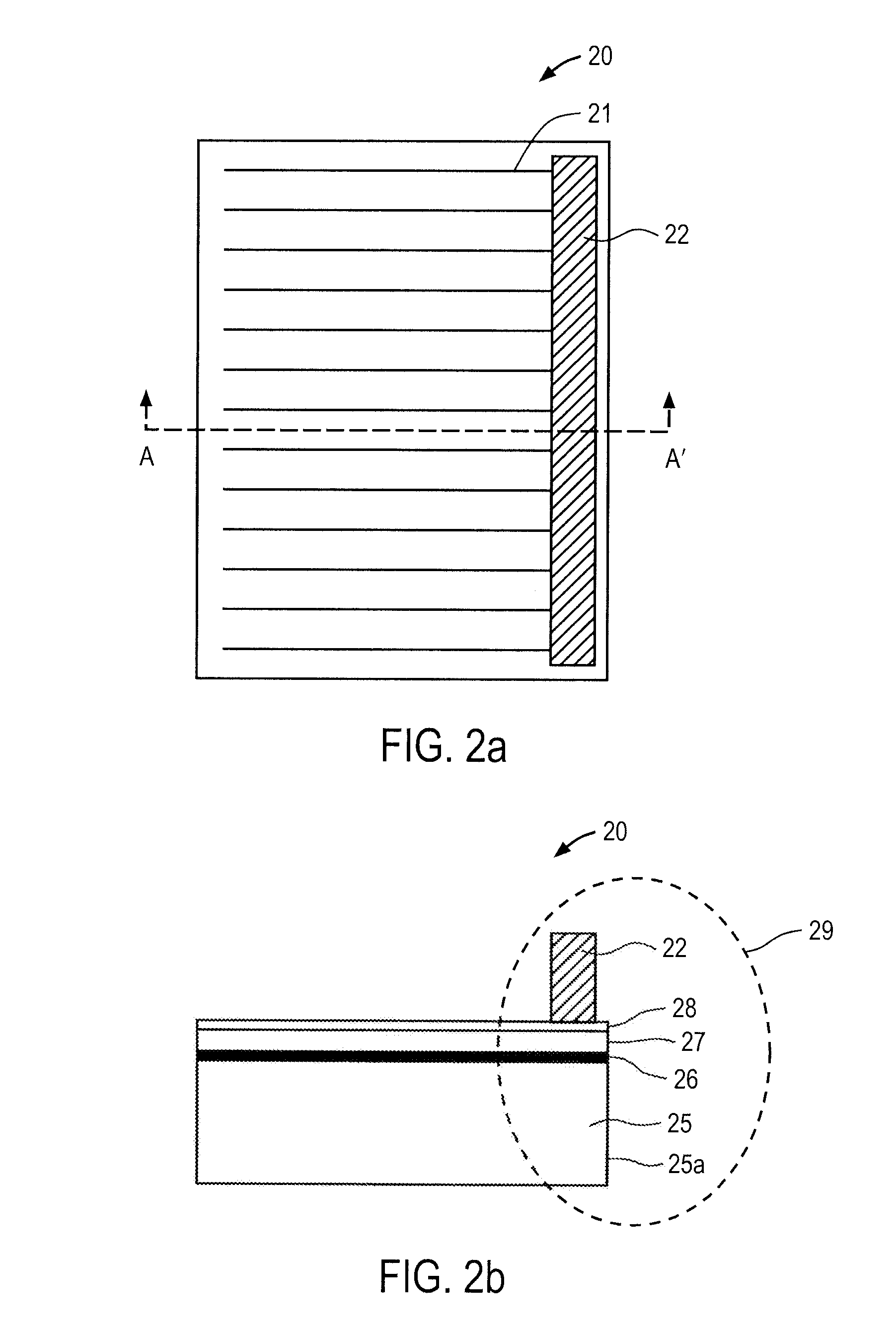Thin film solar cell manufacturing and integration
a technology of thin film solar cells and solar cells, applied in the manufacture of final products, manufacturing tools, coatings, etc., can solve the problems of reducing the yield deteriorating the efficiency of modules manufactured using thin film solar cells, and higher electricity generation cost of silicon-based solar cells than the cost of electricity generated by the more traditional methods
- Summary
- Abstract
- Description
- Claims
- Application Information
AI Technical Summary
Benefits of technology
Problems solved by technology
Method used
Image
Examples
Embodiment Construction
[0028]The present invention provides a method for forming a solar cell absorber layer with an active portion and an electrically resistive portion. The electrically resistive portion or resistive portion increases resistance between an underlying base layer and a connector layer. A transparent conductive layer is between the absorber layer and the connector layer. The connector layer or the finger patterns comprises the busbar and the fingers of the solar cell. The busbar is preferably placed over the electrically resistive portion while the fingers extend over the active portion of the absorber layer. The absorber layer may be a Group IBIIIAVIA compound layer and may be formed by first forming a precursor stack including Group IB, Group IIIA and Group VIA materials. The precursor stack may be formed by sequentially depositing the layers of Group IB, Group IIIA and Group VIIA materials.
[0029]In one embodiment, the resistive portion may be formed by masking a portion of the base whil...
PUM
| Property | Measurement | Unit |
|---|---|---|
| molar ratio | aaaaa | aaaaa |
| thicknesses | aaaaa | aaaaa |
| thicknesses | aaaaa | aaaaa |
Abstract
Description
Claims
Application Information
 Login to View More
Login to View More - R&D
- Intellectual Property
- Life Sciences
- Materials
- Tech Scout
- Unparalleled Data Quality
- Higher Quality Content
- 60% Fewer Hallucinations
Browse by: Latest US Patents, China's latest patents, Technical Efficacy Thesaurus, Application Domain, Technology Topic, Popular Technical Reports.
© 2025 PatSnap. All rights reserved.Legal|Privacy policy|Modern Slavery Act Transparency Statement|Sitemap|About US| Contact US: help@patsnap.com



